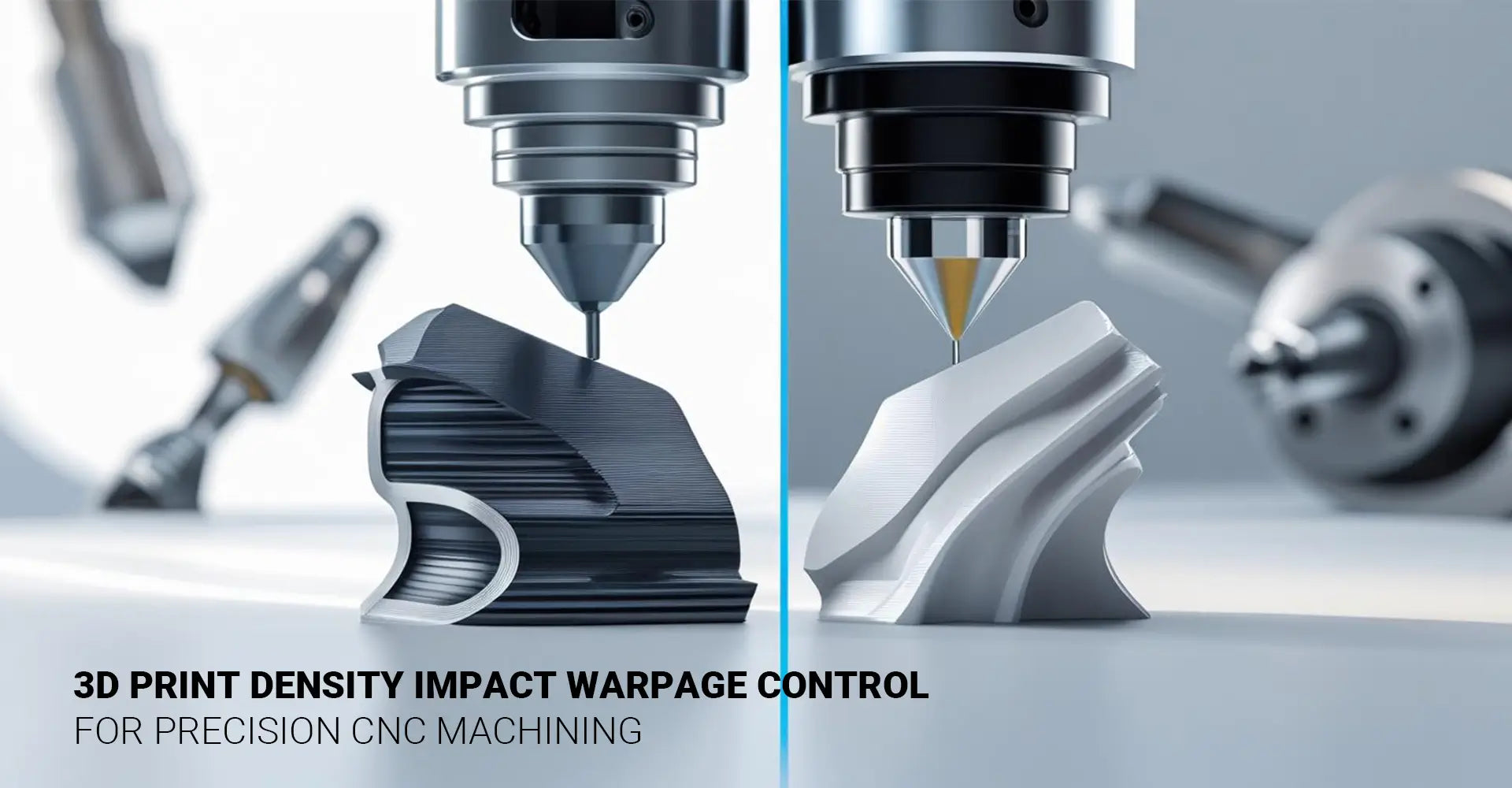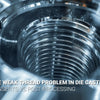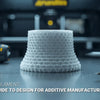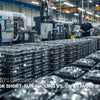How Does 3D Print Density Impact Warpage Control for Precision CNC Machining?

How Does 3D Print Density Impact Warpage Control for Precision CNC Machining?

When your 3D printed prototypes arrive at the CNC machine with unexpected warpage, production costs can spiral by up to 53%. Meanwhile, achieving the right print density becomes critical for maintaining tight tolerances and reducing costly rework cycles in manufacturing workflows. The relationship between 3D print density warpage effect CNC machining has become a crucial factor that determines project success or failure.
Quick Answer: Print density directly controls warpage through layer adhesion strength. Parts printed at 95-98% density show 60% less distortion than standard settings. This translates to fewer machining failures, better surface finishes, and reduced prototype lead times for manufacturers worldwide.
Understanding this density-warpage relationship helps manufacturers avoid common pitfalls that lead to scrapped parts and blown budgets. Let's explore proven strategies that top manufacturers use to control warpage from print to final machined part.
Table of Contents
- Why Does Print Density Create Warpage Issues During CNC Operations?
- Which Density Settings Deliver Consistent Machining Results?
- How Can You Detect Warpage Before Starting CNC Work?
- What CNC Strategies Handle Warped Parts Successfully?
Why Does Print Density Create Warpage Issues During CNC Operations?
Low print density creates internal stress patterns that manifest as warpage when parts cool down. This happens because poorly fused layers contract at different rates, creating internal tension that pulls the part out of shape. Therefore, understanding prototyping warpage control becomes essential for successful manufacturing outcomes.
Key Insight: Parts with density below 93% show warpage rates of 1.2mm per meter length. This level of distortion makes precision machining nearly impossible without expensive compensation strategies.

The physics behind this problem involves thermal gradients during cooling. When layers aren't properly fused, they act like separate sheets that shrink independently. Moreover, areas with lower density cool faster, creating uneven stress distribution. This explains why corners and thin sections often show the most severe warpage. Professional manufacturers track this relationship using thermal cameras during printing, allowing them to predict problematic areas before machining begins.
Additionally, the cooling process becomes more complex when dealing with 3D printing materials that have high thermal expansion coefficients. Parts produced through additive manufacturing must be carefully monitored throughout the cooling phase. Furthermore, the warpage effect becomes more pronounced in larger parts where temperature variations across the build platform create differential shrinkage patterns.
Which Density Settings Deliver Consistent Machining Results?
Optimal density settings vary by material but follow predictable patterns that manufacturers can use to achieve repeatable results. The sweet spot typically falls between 95-98% density for most engineering plastics. Consequently, implementing additive manufacturing distortion reduction strategies becomes crucial during the printing phase.
Material-Specific Guidelines: ABS requires 96% density at 245°C, while Nylon needs 97% density with chamber temperatures above 80°C. These settings reduce warpage to manageable levels under 0.3mm per meter.
Achieving these density levels requires careful calibration of multiple parameters. First, nozzle temperature must reach the upper end of the material's range to ensure complete melting. Second, layer height should not exceed 0.2mm for critical parts. Third, print speed must be reduced by 20-30% from standard settings to allow proper layer fusion. Additionally, chamber temperature control becomes crucial for materials like Nylon, where ambient temperature affects shrinkage rates.
Many manufacturers now use enclosed printers with active heating to maintain consistent conditions throughout the build volume. This approach works especially well when preparing parts for rapid prototyping applications where speed and accuracy are equally important. Moreover, maintaining proper density levels ensures that subsequent machining operations can achieve the desired tolerances without excessive material removal or fixture complications.
How Can You Detect Warpage Before Starting CNC Work?
Early warpage detection saves time and money by catching problems before expensive machining operations begin. Several cost-effective methods can identify distortion without expensive metrology equipment. This proactive approach prevents delays in industrial machinery production schedules.
Quick Detection Methods: The glass plate test reveals gaps over 0.3mm, while smartphone apps can measure surface angles within 0.5 degrees. These simple checks catch 85% of problematic parts before they reach the machine shop.
Professional shops combine multiple detection methods for comprehensive assessment. The glass plate test works well for flat surfaces but misses complex geometries. Therefore, the diagonal string method provides better coverage for curved parts by measuring deviation across the longest dimensions. For production environments, coordinate measuring machines offer precision down to 0.01mm but require significant investment.
However, many shops achieve excellent results using photogrammetry software with standard cameras, creating 3D models that reveal warpage patterns. This approach costs under $500 and provides detailed analysis for complex geometries. Furthermore, early detection allows manufacturers to implement corrective measures before committing to expensive machining operations. The key lies in establishing measurement protocols that catch distortion while parts can still be salvaged through heat treatment or reprinting.
What CNC Strategies Handle Warped Parts Successfully?
When warpage cannot be prevented, adaptive CNC strategies can salvage parts and maintain production schedules. These techniques require careful planning but deliver consistent results across various distortion levels. Implementing effective warpage compensation strategies allows manufacturers to work with less-than-perfect printed parts while maintaining quality standards.
Proven Techniques: Fixture shimming handles warpage under 0.5mm, while adaptive tool paths compensate for larger distortions. These methods reduce scrap rates by 40% compared to standard machining approaches.

Successful warpage compensation starts with proper workholding design. Kinematic fixtures using the 3-2-1 principle provide repeatable positioning while accommodating slight distortions. Compliant materials like silicone pads absorb minor warpage without inducing additional stress. Furthermore, reference surface machining should occur within 30 minutes of part setup to prevent thermal drift.
For severe warpage, 3D scanning creates accurate surface models that guide adaptive tool path generation. This process adds 15-20% to machining time but eliminates the risk of scrapped parts. Advanced CNC controls can automatically adjust cutting parameters based on real-time probing, ensuring consistent surface finish despite varying part geometry. Professional CNC machining services often employ these advanced techniques when dealing with CNC machining 3D printed parts to ensure optimal results.
The machining strategy must also account for material properties that may have changed due to warpage-induced stress. Therefore, cutting speeds and feeds should be reduced by 10-15% when working with distorted parts. This conservative approach prevents tool breakage and ensures consistent surface finish quality across the entire part.
Conclusion
Managing 3D print density effectively controls warpage and enables successful CNC machining of printed parts. The key lies in understanding material-specific density requirements, implementing early detection methods, and applying adaptive machining strategies when needed.
The Contents of Conclusion
Successful manufacturers combine optimal print settings (95-98% density), early detection methods (glass plate and string tests), and adaptive CNC strategies (fixture shimming and compensated tool paths) to achieve consistent results. This integrated approach reduces rework by 37% while maintaining tight tolerances throughout the prototyping process. By following these proven methods, manufacturers can confidently machine 3D printed parts without the fear of costly failures or production delays.
The relationship between print density and warpage control represents a critical success factor in modern manufacturing. Companies that master these techniques gain significant competitive advantages through reduced lead times, lower costs, and improved quality consistency. Moreover, as additive manufacturing continues to evolve, understanding these fundamental relationships becomes increasingly valuable for maintaining manufacturing excellence.
External Links Recommendation
[3D print density warpage effect][^1]
[prototyping warpage control][^2]
[additive manufacturing distortion reduction][^3]
[CNC machining 3D printed parts][^4]
[residual stress 3D printing][^5]
[thermal deformation mitigation][^6]
---
[^1]: Understanding the 3D print density warpage effect is crucial for improving print quality and reducing defects. Explore this link for in-depth insights.
[^2]: Effective warpage control in prototyping is essential for precision. Discover techniques and best practices to enhance your prototyping process.
[^3]: Explore this link to learn effective strategies for minimizing distortion in additive manufacturing, ensuring higher quality and precision in your projects.
[^4]: Discover how CNC machining can enhance the quality and functionality of 3D printed parts, making them more reliable for various applications.
[^5]: Understanding residual stress in 3D printing is crucial for improving print quality and material performance.
[^6]: Exploring thermal deformation mitigation techniques can enhance product durability and precision in various manufacturing applications.





